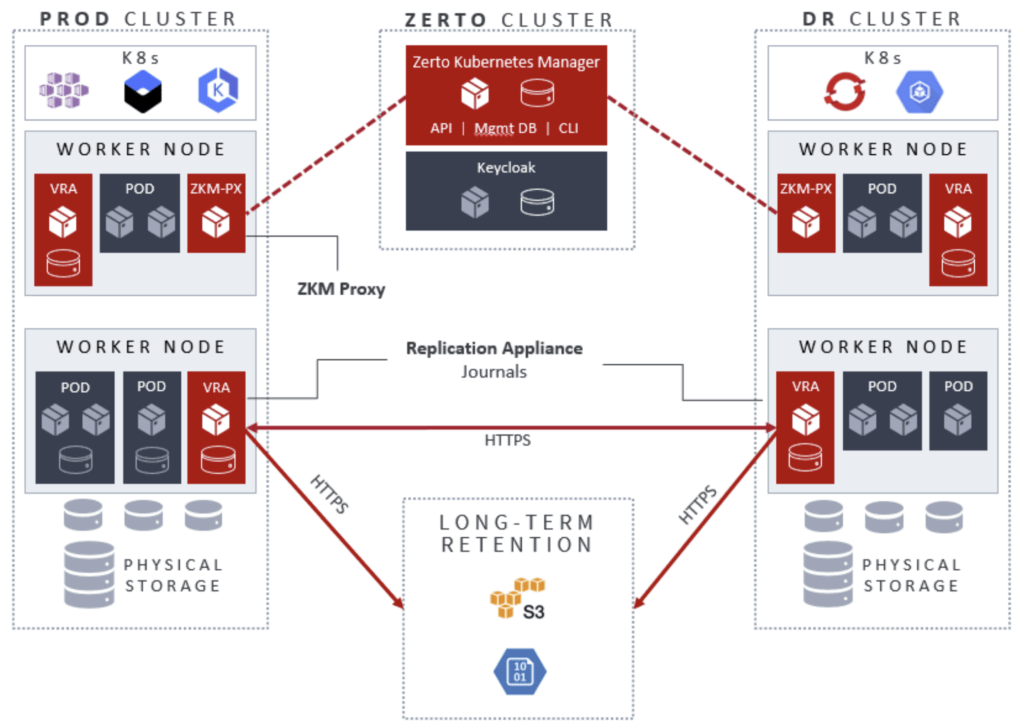The purpose of this document is to provide architectural guidance for designing and implementing Zerto for Kubernetes in a production environment. This solution can be optionally paired with a secondary Kubernetes cluster for disaster recovery, with both sites targeting a long-term retention repository for backups. The guide covers design principles, architecture considerations, and best practices for deploying Zerto for Kubernetes. While the examples in this guide offer a glimpse of what Zerto for Kubernetes can support, its true strength lies in its software-only, scale-out architecture and platform-agnostic approach, enabling granular protection and industry-leading Recovery Point Objectives (RPOs) and Recovery Time Objectives (RTOs) with application-centric data protection as code.

Zerto for Kubernetes Overview
Zerto for Kubernetes seamlessly integrates continuous backup, disaster recovery, and mobility into the application lifecycle. Key features include:
- Continuous Data Protection (CDP): Built upon Zerto’s industry-leading CDP technology, this solution ensures unrivaled recovery speeds and minimal data loss. Achieving RPOs in seconds and RTOs in minutes, Zerto for Kubernetes protects containerized applications and their associated components running on Kubernetes, including persistent data.
- Zerto Analytics: Centralizing metrics and information, Zerto Analytics provides complete visibility across multi-site and multi-cloud environments. Organizations gain confidence that Service Level Agreements (SLAs) and compliance requirements are met.
- Platform Support: Zerto for Kubernetes is currently available for the following platforms:
- Azure Kubernetes Service
- AWS Elastic Kubernetes Service
- Google Kubernetes Engine
- IBM Cloud Kubernetes Service
- Red Hat OpenShift
- VMware Tanzu
Benefits of Continuous Data Protection vs. Snapshot Technology
Zerto’s CDP technology offers significant advantages over traditional snapshot-based approaches:
- Always-On Replication: Containers remain operational 24/7, regardless of disruptions or threats.
- Application-Centric Recovery: Accelerated RTOs with consistent recovery of complex applications across multiple Kubernetes deployments.
- Instant Journal-Based Recovery: Simple recovery experience without impacting performance.
Disaster Recovery Challenges in Kubernetes Environments
Containerized applications demand robust disaster recovery solutions. Legacy tools fall short due to outdated technologies that cannot meet Kubernetes’ rigorous 24/7 operational demands. Zerto for Kubernetes addresses these challenges effectively.